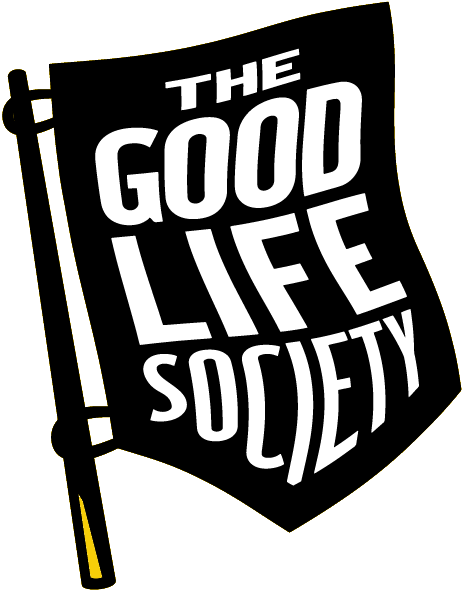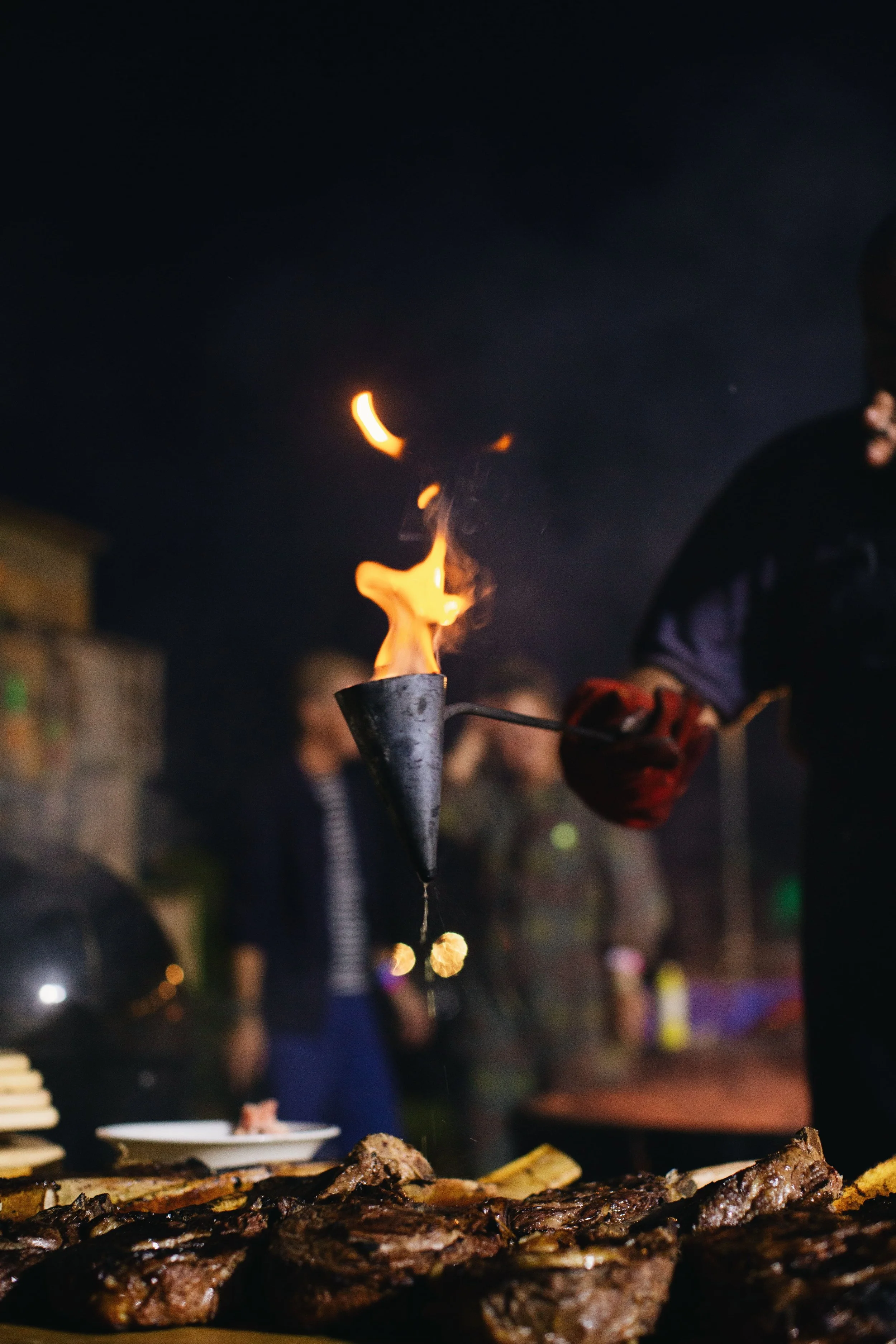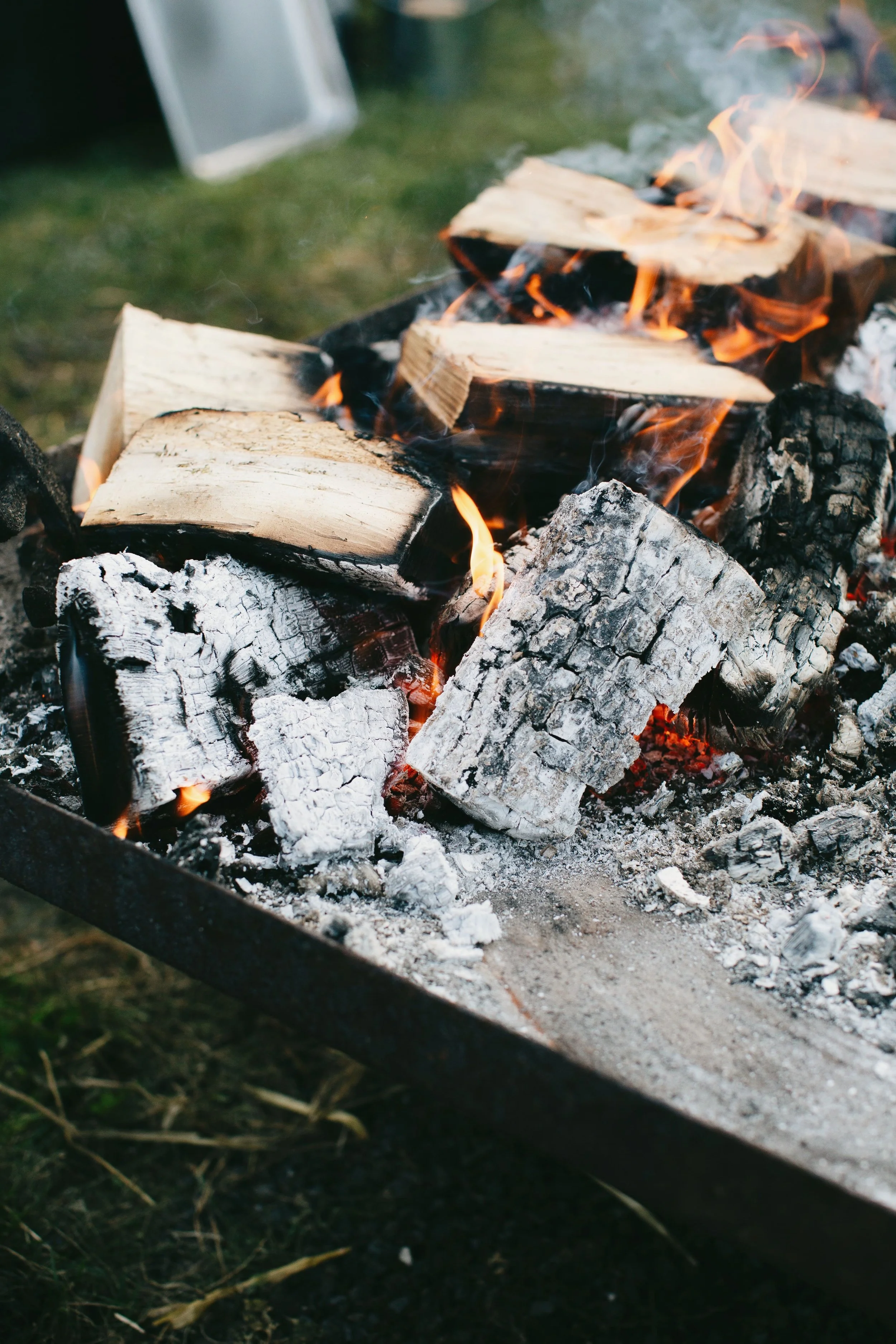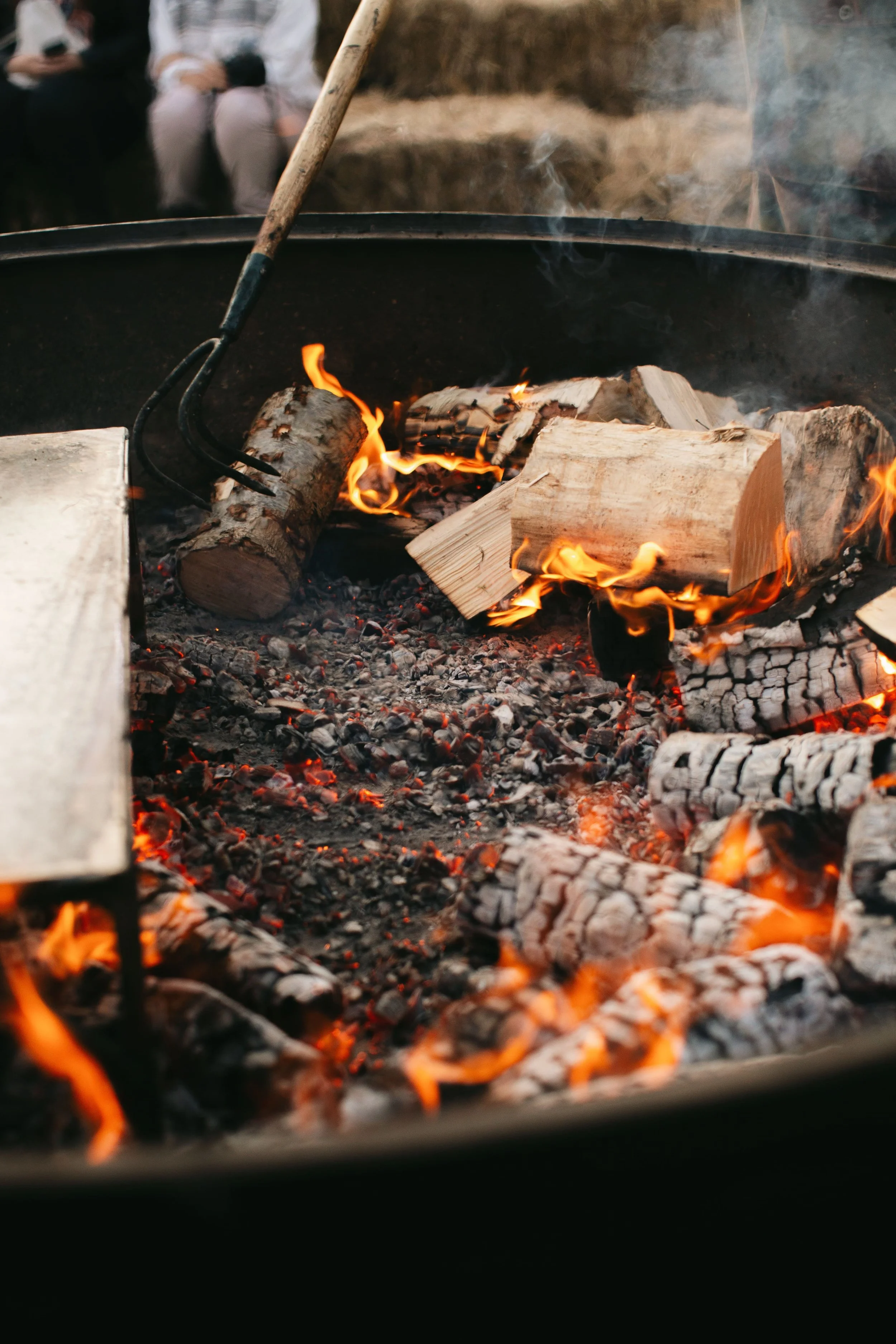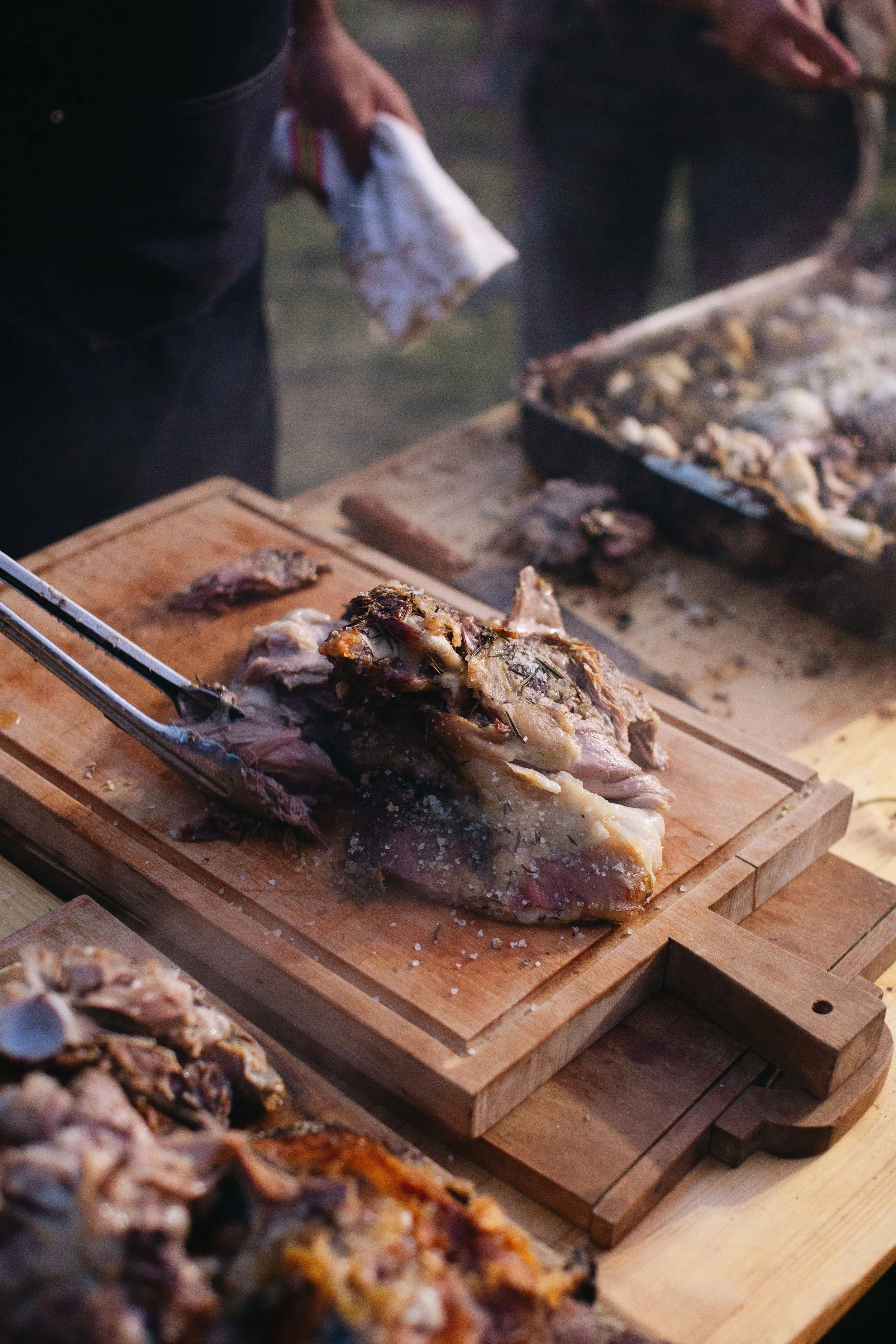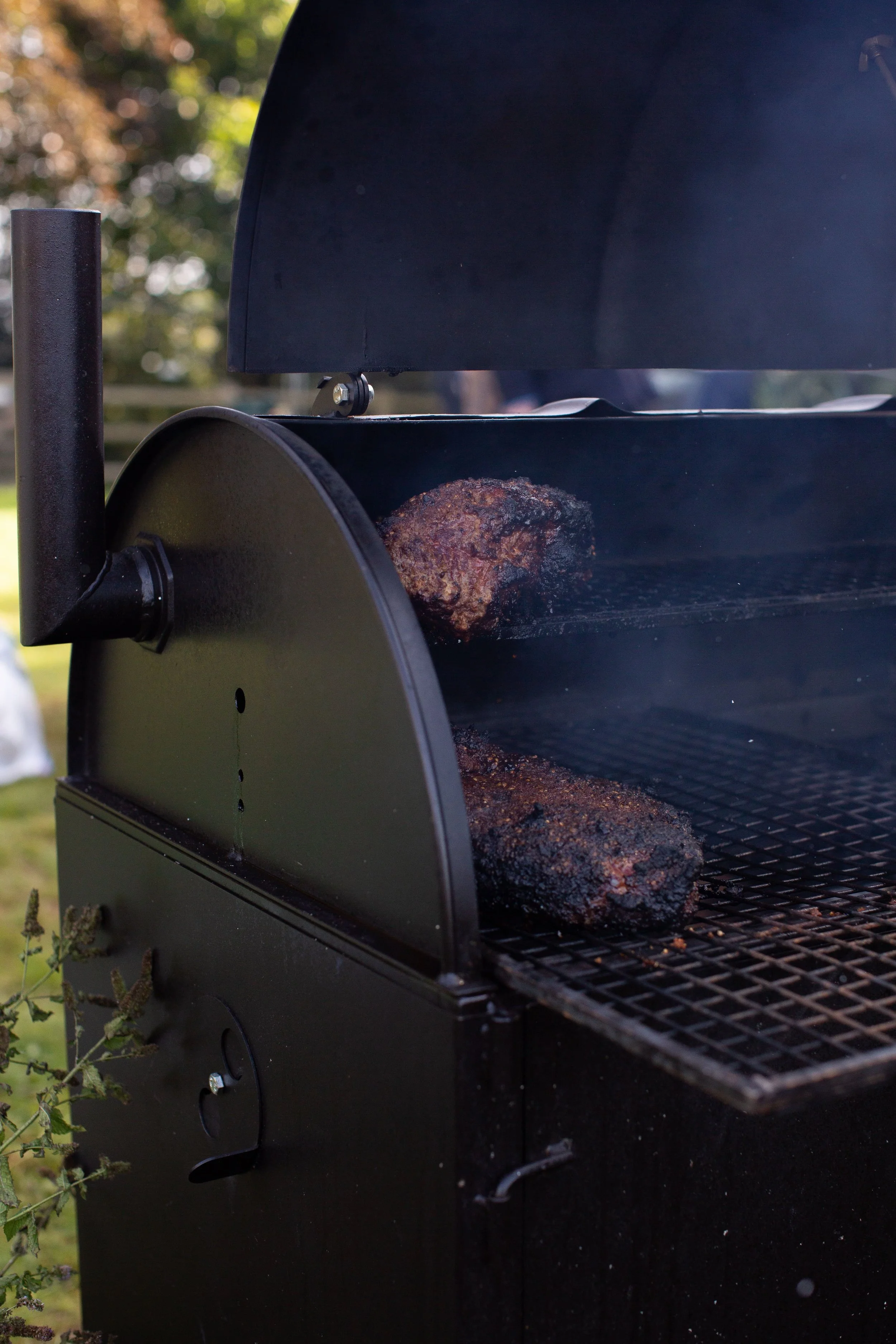How to Cook on Fire by Chris Roberts
Chris Roberts is a chef, television personality and enthusiast.
His rules are pretty simple:
stoke the fire
Don’t overcomplicate
Have fun
Delicious food will follow
For many at our The Good Life Experience and Summer Camp events, Chris Roberts is a legend and not just because he’s a fine chef; it’s his radiant enthusiasm, kindness and boundless energy that really do it for our guests.
Over to Chris…
Fire runs in our blood; it’s seared into our DNA.
Before gas, electric, microwaves and George Foreman grills, we all cooked with fire. But life moves fast nowadays and fire cooking has almost become a lost art.
Luckily, my dad instilled a love of fire in me that dates way back to my Welsh ancestors, who emigrated to Patagonia in 1865 and embraced the asado way of life.
Dad loved that part of the world and every couple of years he would stay in South America for a month or so, camping, fishing, speaking Welsh and cooking with the Patagonian Gauchos. The dream.
When he returned home to north Wales after each trip, he’d tell me all these beautiful stories – especially about how asado wasn’t just a way of cooking there, but a way of life.
Picture this: lambs roasting on epic steel crosses over the fire; freshly caught rainbow trouts, cooking gently on smaller wooden asado crosses nearby; empanadas in wood ovens; whole chickens in fire-baked salt crusts; smoking pumpkins and squashes in underground buried fire pits.
Fire, he told me, not only brought family and friends closer together, but communities, villages and even whole towns.
I was a bit of a tw*t as a teenager and didn’t really appreciate my old man’s tales at the time. Sadly he passed away in 2013, but a few years later I saw an episode of Chef’s Table on Netflix about the legendary Patagonian Gaucho chef, Francis Mallmann. It was a beautiful moment for me, as all of my dad’s stories came flooding back.
Within three months, I’d built an asado pit with four steel crosses (the same one I'd later use at TGLE in 2018 and 2019) and created ‘Chrisfest’ - my own asado food festival in my hometown of Caernarfon, celebrating fire and Snowdonia mountain lamb.
Fire Starter
Ok, let’s talk fire.
First of all, I don’t see wood or charcoal as fuel – they’re more like ingredients.
So the quality of ‘fuel’ is just as important as the quality of the food you’re cooking, so always use properly seasoned hardwoods.
Damp logs will give a bitter acrid smoke taste and the smoke from softwoods will destroy your food, so make sure the wood you use is bone dry. Kiln-dried logs are amazing and I love the coals from burning good oak. You’d be surprised at the different flavour profiles of different wood and how they complement different meat, fish and vegetables.
I love smoking and experimenting with different hardwoods (fruit woods are what tend to give my favourite smoky flavours).
When starting a fire, I like to build a small tower of seasoned hardwood with six logs, Jenga style. I put super dry kindling at the bottom and then scrunched up paper.
One flick of a match and you have fire!
Start small and build it up gradually by adding more logs as the fire gets bigger. Build your fire away from overhanging branches, tents, patios, bushes, buildings, driveways or anything flammable.
Choose a flat, dry area that won’t damage and contain the fire by putting a ring of stones around it.
A safety note: always have water, sand or a fire extinguisher handy, just in case.
I also love having a shovel nearby to help move burning logs, embers and ash.
No two fires are ever the same but the more you experiment and cook with fire, the more confidence you’ll have and the better you’ll become at adapting to all the outdoor kitchen variables.
When cooking with wood, you don’t want to cook with the flame - focus on the coals, embers, ash and smoke. This is why you need to start a fire at least a good hour or so before cooking, to get those beautiful red-glowing coals and embers.
Up Your Grill
Moving onto the BBQ, the number one mistake I always see people make is to fill it up to the max with charcoal. If there are no cool zones, you’ll have one fat flare up and all of the sausages and burgers get cremated in an inferno.
Next time you bring out the BBQ, try and divide the grilling area into two zones, the direct zone and the indirect zone.
Hot charcoal should cover 50% of the grill for direct sizzle-sizzle cooking and a cool zone with no coals should be used for indirect cooking, smoking or as an area where you can move anything that flares up from the hot zone. These two zones will give you more control over the BBQ.
A chimney starter will save you a lot of time when barbecuing; scrunch some newspaper under the starter, fill it with charcoal and in 10-15 minutes you’ll have cook-ready coals.
Please never buy lighter fluid chemical doused charcoal from eco-destroyed woodlands from the other side of the world – especially those nasty disposable barbecues.
Try and get sustainable British charcoal as they’ll burn clean, with pure flavours.
For me, the best part of fire cooking comes after the food is served: keeping those fires burning and enjoying good wine with good people around the fire all night long.
As my dad always said, it’s not just a way of cooking – it’s a way of life.
This article has been extracted from our Hand Book, which we created in 2021 as a way to keep our community engaged with The Good Life during those event-free months and waves of covid.
